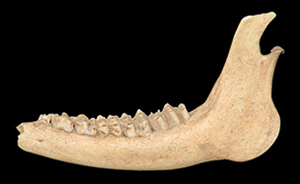Article contents
Sika deer in Bronze Age Guanzhong: sustainable wildlife exploitation in ancient China?
Published online by Cambridge University Press: 23 June 2021
Abstract

The interplay between sustainability and anthropogenic landscape transformation is crucial to understanding the past decline and eradication of wild animals. The Bronze Age site of Zaoshugounao is located in the Guanzhong region of China, an area critical in the formation and development of early Chinese civilisation. Drawing upon zooarchaeological, palaeoenvironmental and textual evidence, analysis of sika deer remains from Zaoshugounao reveals sustainable sika deer-hunting strategies at the site, despite an overall long-term trend in the sika deer population decline and habitat loss. The authors’ results highlight the complexity and diversity of human-sika relations and contribute to ongoing discussions surrounding wild animal eradication and conservation in China.
- Type
- Research Article
- Information
- Copyright
- Copyright © The Author(s), 2021. Published by Cambridge University Press on behalf of Antiquity Publications Ltd.
References
- 9
- Cited by




